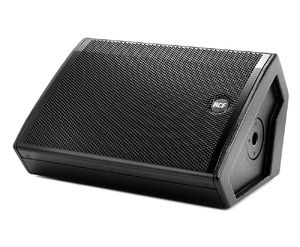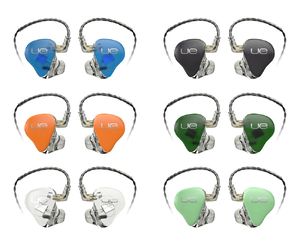2. Pros & Cons
Freedom of Movement
One of the most obvious advantages of inear monitoring is the ability to move around the stage. Conventional wedge monitors are usually fairly directional, not least because this helps reduce the risk of feedback. The only way to hear a consistent mix throughout a gig is not to move! Earpieces and headsets, on the other hand, maintain a consistent position in relation to the wearer's head, so a good balance that works in the soundcheck should in theory be fine all night.
No Feedback
With some PA systems, and in some venues, it is difficult or impossible to turn stage monitors up as loud as the musicians would like without inducing feedback. How often have you asked for more level in your monitor only to be told that you'll be risking feedback? Although it's technically not impossible to achieve feedback with inear monitors you'd probably have to turn everything up to ten and press a mic against your ear, so it's not something that happens in the real world.
Civilised Stage Volume
It's a fact: most rock and pop musicians regularly expose themselves to sound pressure levels that would be considered unsafe (not to mention illegal) in a factory or other workplace. While ear protection is of course available, many musicians find even the most expensive custom-moulded solutions unsatisfactory, often tearing them out halfway though a gig in frustration at the mushy, muffled sound reaching their ears. When a musician is struggling to hear himself on stage, his usual course of action is to turn himself up. If everyone keeps doing this, it doesn't take long to reach an unpleasantly high volume. As well as being too loud in total, on-stage sound is often an unpleasant affair simply because of the sheer number of sound sources blasting away in different directions, at high volume in a small space with reflective walls: drums, cymbals, guitar amps, bass amp, monitors, main speakers (and multiple reflections from all of these) usually add up to produce a sound best described as a mess.
As well as removing some of the sources of this noise (the stage monitors and even possibly bass/keyboard amps), the use of inear inear monitoring also greatly reduces the war-of-attrition effect of everyone turning themselves up - you can ask to hear more of yourself without affecting anyone else.
Smaller Rig
Anyone who isn't lucky enough to be working with a fixed installation will appreciate another advantage of inear systems: their size and weight, or rather their lack of both. Most working musicians spend a lot of time loading and unloading vans, often in the cold and the middle of the night; a typical PA system with four or more wedge monitors can be dramatically reduced in size and weight by switching to an inear system. It's also easier and quicker to set up, with much less cabling - or by using rack mounted wireless transmitters permanently connected to the mixer, none at all.
Predictable Sound
Stage monitors are affected by room acoustics just as much as front-of-house speakers - often more so, as they are frequently placed so that they point straight at a rear wall or even into a corner, causing all sorts of standing waves and resonances. Inear monitors deliver a predictable sound that is as good or bad as the chain of hardware in use but is independent of room acoustics. A touring/function band with an automated mixer should be able to experience the same sound on stage night after night, while their engineer can devote all his energy to the front-of-house sound.
Live Feel
Inear monitoring can feel a bit strange at first, particularly with sealed earpieces that reduce ambient noise. It can be a little unsettling to feel as though you're in the studio rather than in front of an audience. There are several possible solutions to this; one popular technique involves directing a mic at the audience and mixing this into the monitor sends (obviously it's a good idea to make sure it isn't sent to the main speakers too) to give the players a sense of ambience and audience presence. There is of course another solution: get used to it!
Many bass players trying inear monitoring as a way of avoiding having to lug around heavy speaker cabs complain that it feels physically odd to play with an empty space behind them where their amp used to be. One solution is to use light dummy cabinets, which many big rock acts do anyway to some extent, or to replace them with something of similar shape and size, though one suspects that the solution favoured by Geddy Lee of Rush - a row of tumble dryers - could only be appreciated by someone who hasn't had to carry his own equipment for many years anyway!




